Xanthogramma species in Europe
While X. citrofasciatum, X. laetum and X. marginale are relatively easy to ID, the following species-complex (formerly regarded as a single species) is harder to approach:
X. pedissequum, dives and stackelbergi are very similar looking species and often (especially in males) not safely to ID. Fotos from different angles (dorsal, lateral, ventral [abdomen!] and in females also a frontal view) can be very helpful for the ID process.
The distinction between males and females is quite easy: In ♀♀ the eyes are clearly separate, whereas in ♂♂ the eyes touch in the middle.
This is a map view of the three species, including those at genus level. (Updated: 20AUG21)
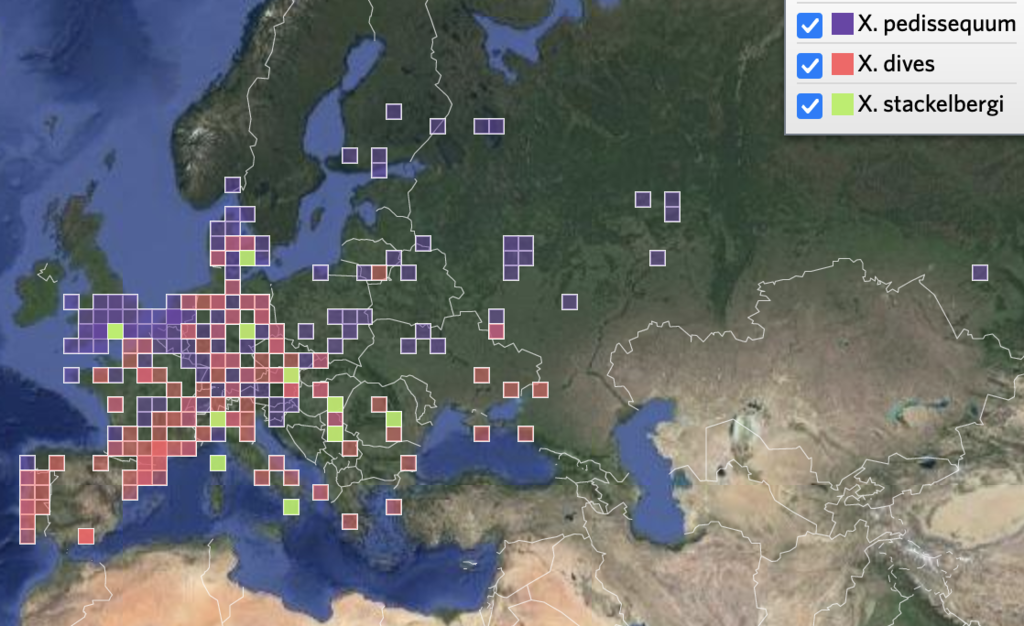
To see an up-to-date distribution map in the Compare tool, click here, and here for the taxa map
- X. stackelbergi clearly is the rarest reported species of those three on iNaturalist, but can probably be found across the continent.
- X. pedissequum has a more northerly distribution, but with a broad range of overlap with X. dives. (I never managed to find X. p. so far).
- X. dives seem to extends its range further north, but so far has not been reported from UK
Features to look for:
X. dives:
In females, the wing tips are darkened, which is sometimes also visible (to a lesser degree) in males.
FEMALE:
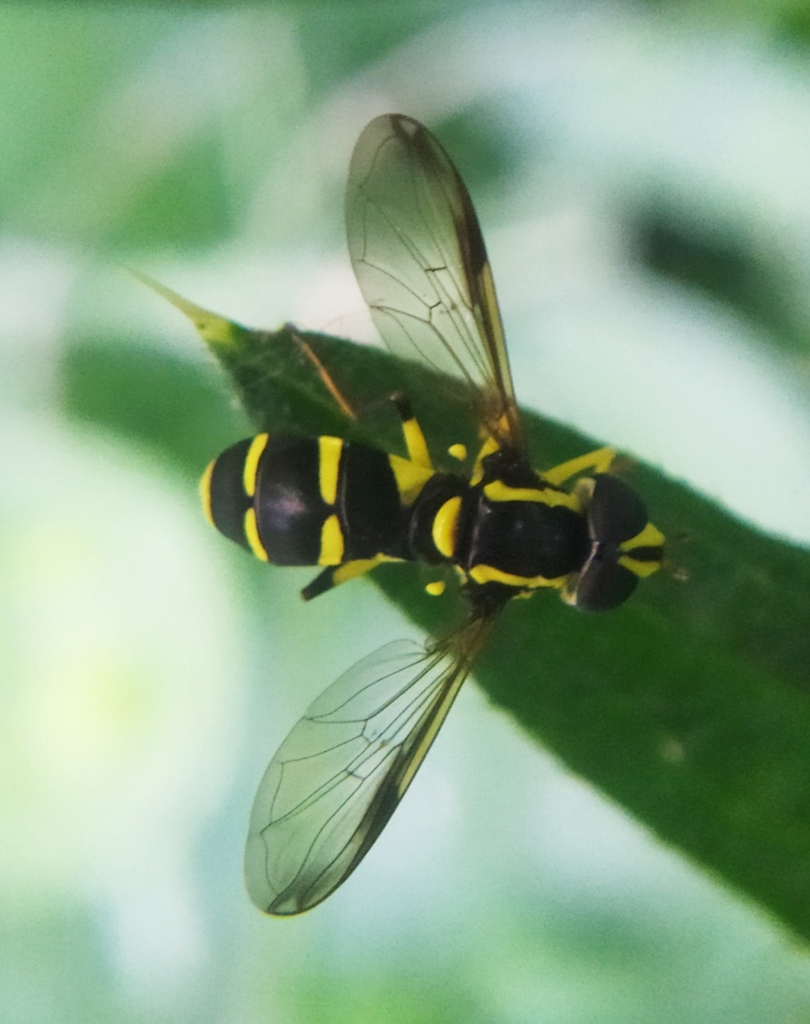
MALE (slight infuscation visible):
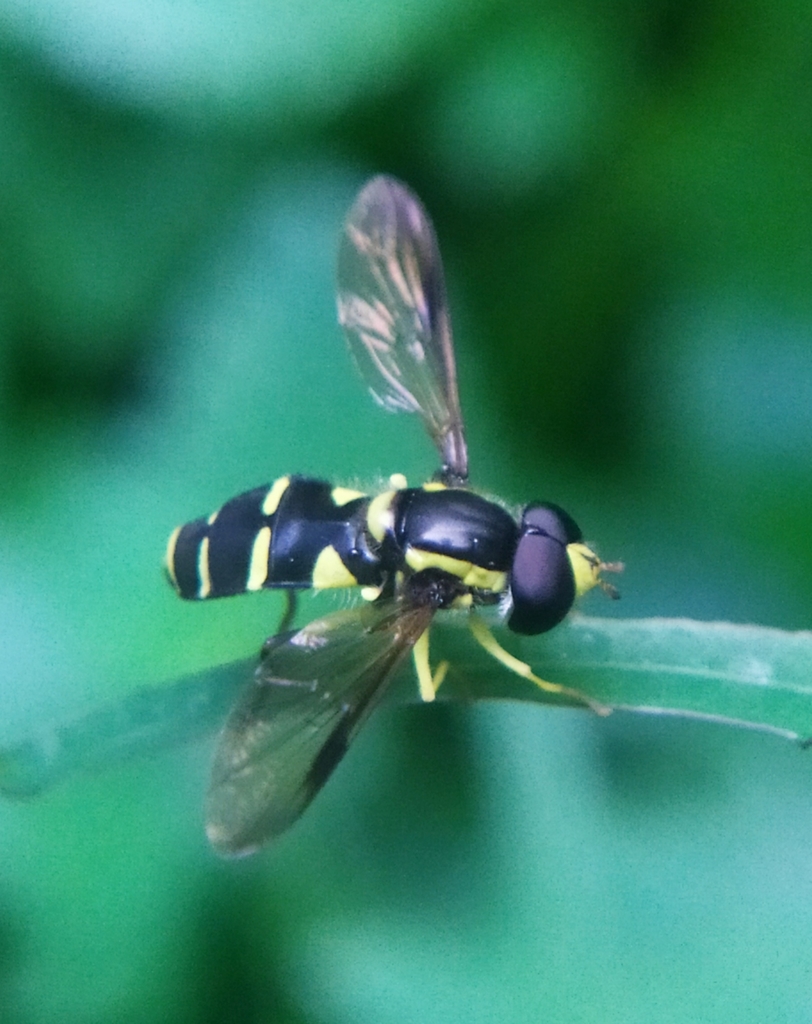
There are cases, however, where even in ♀♀ there is no darkened wing tip visible, either due to light situation, background noise behind the wing or because of individual variation:

Here, a combination of characters and shooting from different angles becomes important:
The yellow pleuron (red circle) in front of the (also yellow) haltere is a good hint, but is sometimes (rarely) also present in X. pedissequum. A view of the latereal underside is very helpful: the border of the sternite is yellow, where in X. pedissequum that area between the dashed green lines would be dark.
So, X. pedissequum is ruled out - but this does not yet exclude X. stackelbergi. That species has lighter brown hindlegs (in X. dives they are partially blackish, see blue arrows) and the black line at the frons would be thinner as well (purple arrow), not reaching the antennal bases (this feature works in females only).
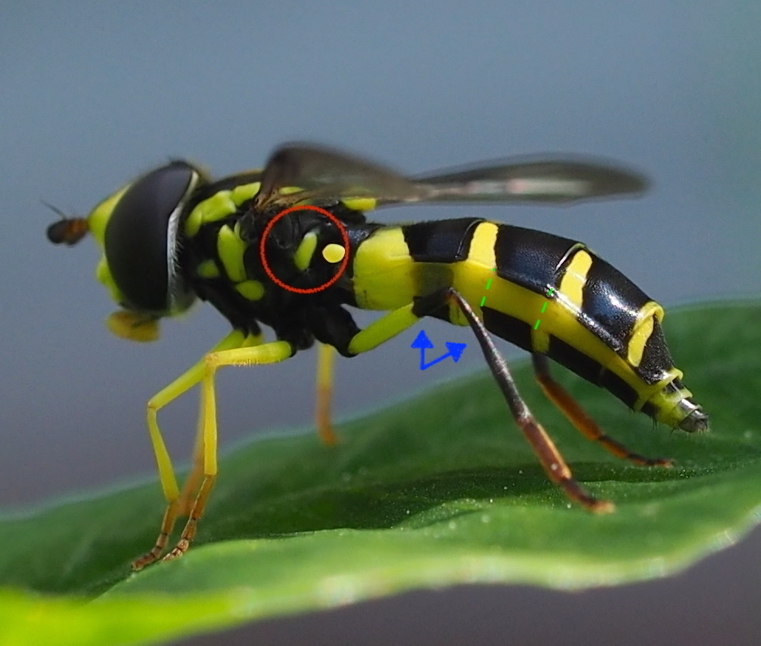
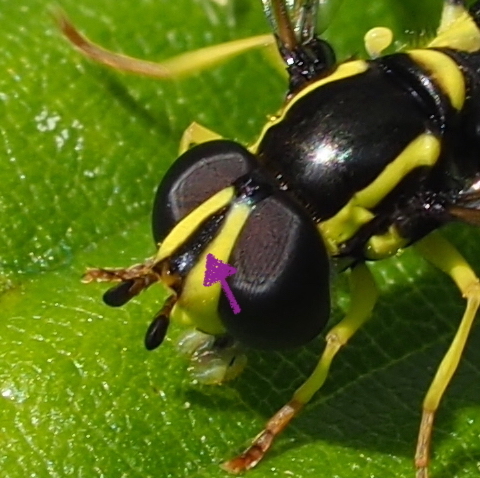
X. pedissequum:
Here is a dorsal photo from a female (kindly provided by Paul Cook). Although an additional photo of the underside would be desirable, enough details are visible:
The additional yellow pleuron near the haltere is missing (see if you can spot that feature in the above dorsal shot of a X. dives-female), which readily allows a species ID. Additionally, the wing spot extends beyond vein r2+3, the frontal black stripe is thick and reaches the antennal bases (cf. X. stackelbergi), the wing tips are not darkened and the distal part of the hind femora are brownish, not as black as in X. dives.
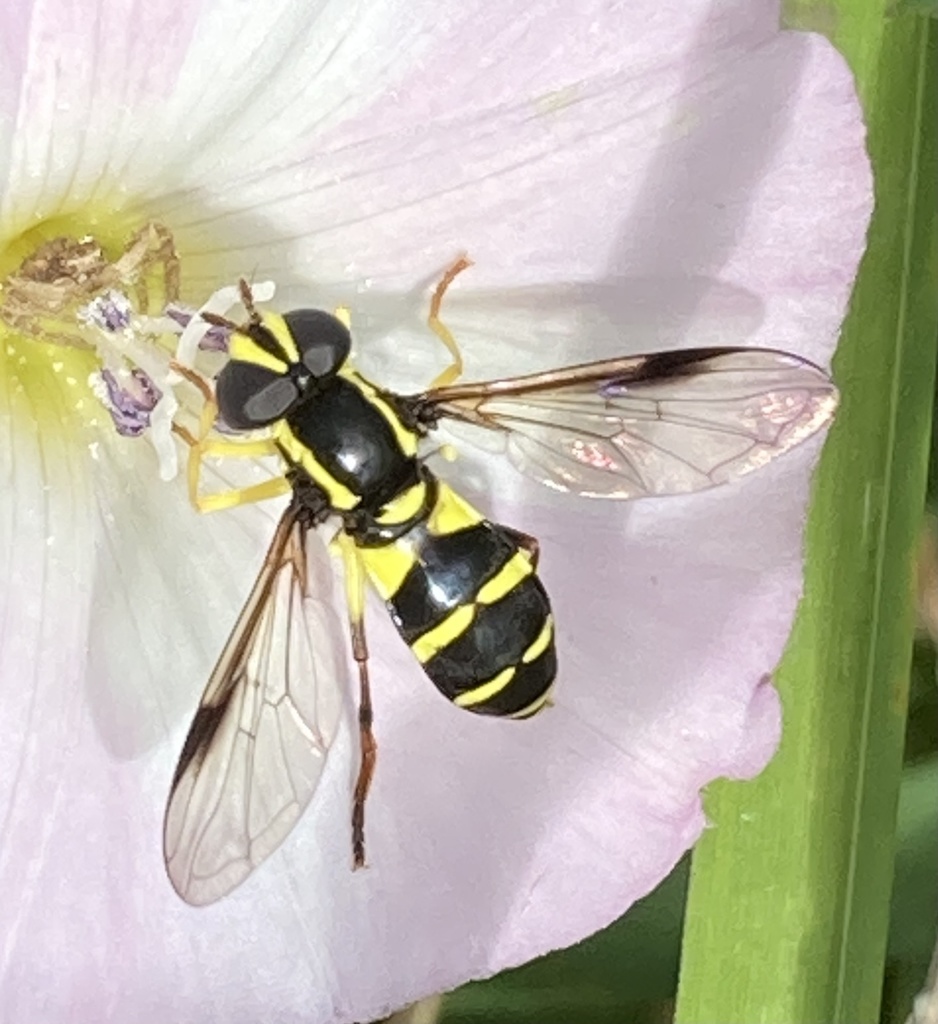
X. stackelbergi:
In males, the yellow spot on tergite 2 is not triangular, but more 'dragged' in direction of the rear end, resulting in a rounder and skewed shape.
But CAREFUL: These marks are variable within these species and can only give a hint but don't allow an ID on its own!
In both sexes, the dark wing spot does not extend beyond vein r2+3 (purple line). Compare wing of X. pedissequum above, where the dark area crosses the vein. There is usually a brown leg ring visible on the hind femur, contrasting to the bordering blackish color, but I am unsure whether this is a good feature and might be variable within the different species.
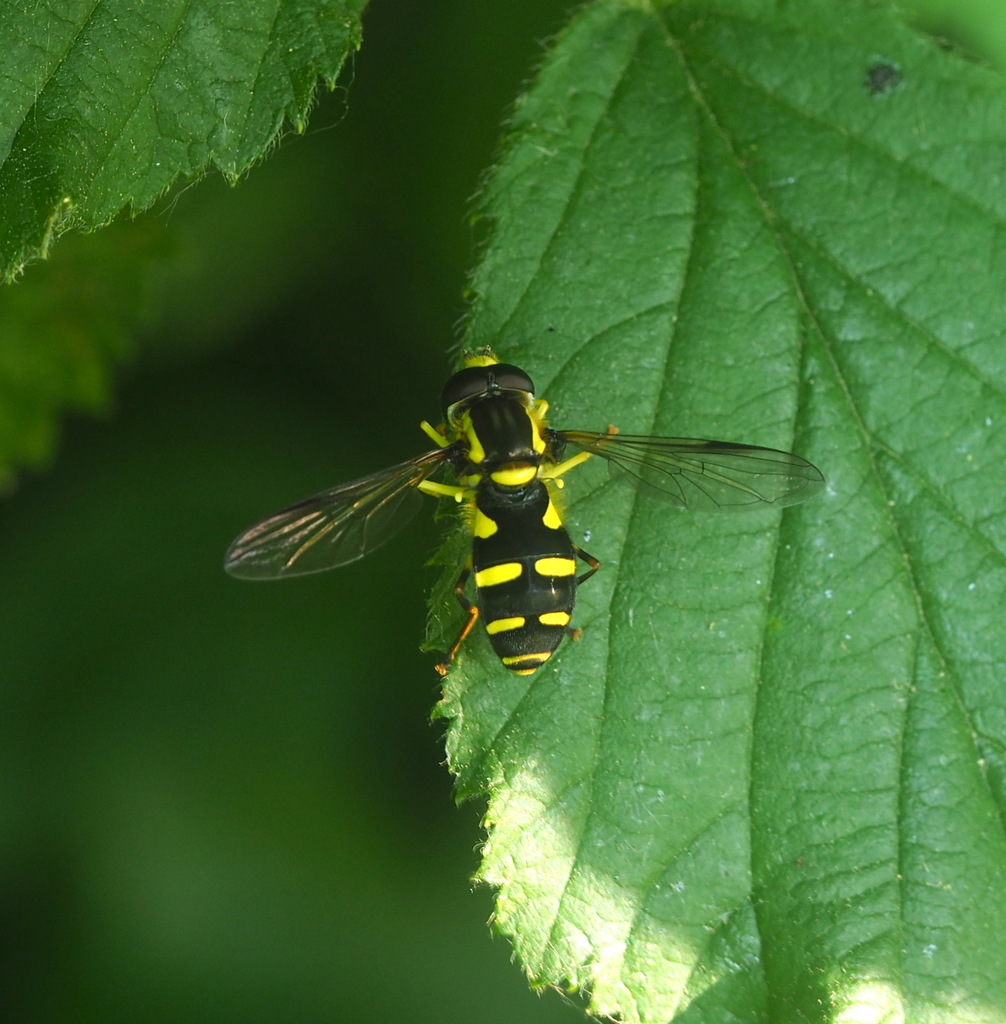
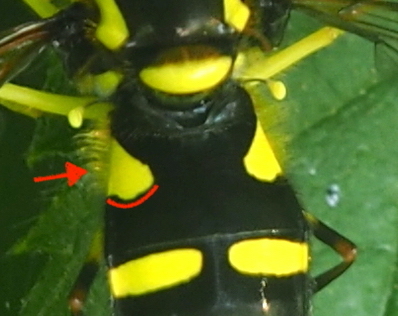
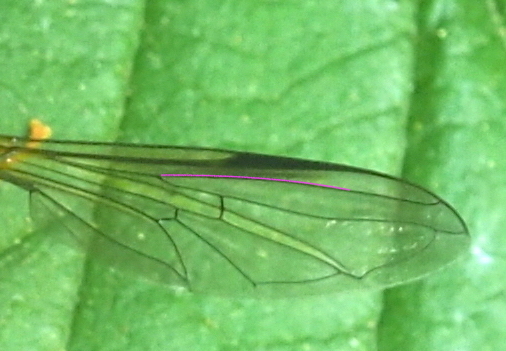
Additional ID features provide the yellow/black borders of the sternites, but for this to photograph it would be almost always necessary to catch the specimen.
References:
van Steenis et al (2014): Twee nieuwe citroenzweefvliegen voor nederland: Xanthogramma dives en X. stackelbergi (Diptera: Syrphidae)
Nedeljkovic et al. (2018): The genus Xanthogramma Schiner, 18612 (Diptera: Syrphidae) in southeastern Europe, with descriptions of two new species




